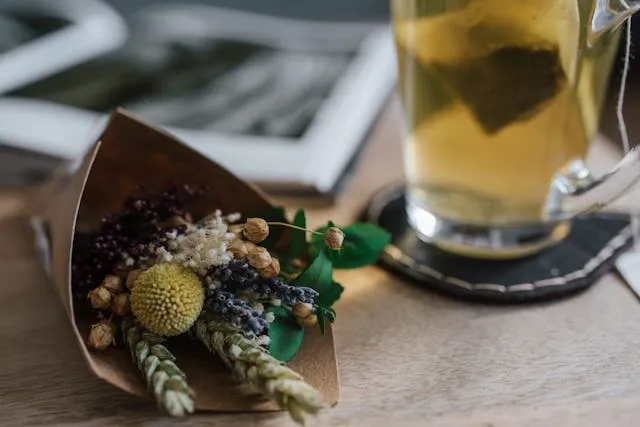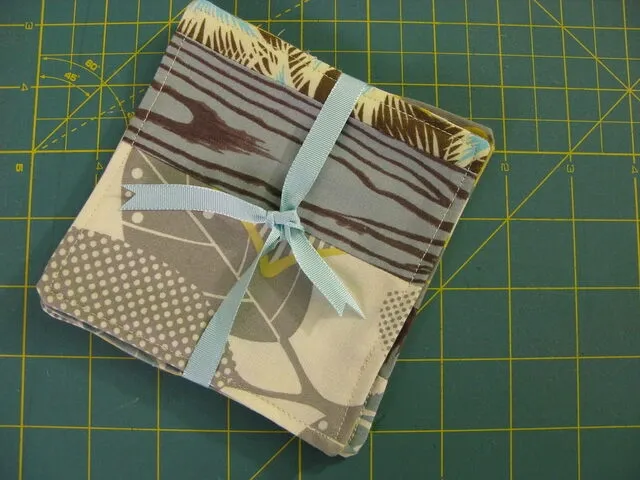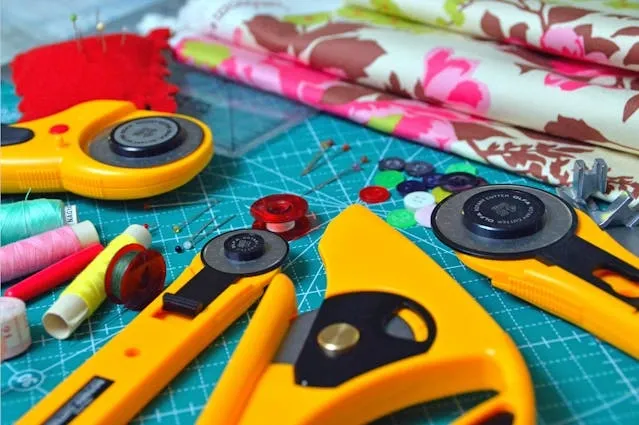How To Make Fabric Coasters: DIY Steps, Styles, Materials And Fabric Options
Fabric coasters are an excellent DIY project where the end result combines functionality with creativity. They are brilliant for protecting surfaces from moisture, heat, and scrapes whilst adding a personalized touch to your decor.
In this guide, we show how easy it can be to make them even if you are a beginner. Explore fabric and style choices to customize coasters to any aesthetic, whether sew or no-sew. Read on to discover essential steps, materials, and considerations for how to make fabric coasters.

Key Takeaways
- Fabric coasters are simple to make with basic tools and materials, but it is important to use proper materials for maximum durability, absorbency, and aesthetic appeal.
- There are different methods available, including sewing and no-sew techniques, to suit various skill levels.
- Customization options include fabric choices, designs, and techniques to tailor the look to different preferences, decor choices, or occasions.
- We supply high-quality custom coasters in a range of materials at great prices so you can get a professional finish no matter what your preferences are.
Table of contents
-
How To Make Fabric Coasters
-
How Do You Sew Fabric Coasters?
-
Different Techniques For Making DIY Fabric Coasters
-
Which Fabric Works Best For Coasters?
-
How Do You Waterproof And Seal Fabric Coasters?
-
What’s The Process For Making No-Sew Fabric Coasters?
-
What Additional Steps Are Useful For Making Fabric Coasters?
-
Are Fabric Coasters Effective?
How To Make Fabric Coasters
There are a few simple steps involved in making fabric coasters. Essential tools include scissors, a sewing machine, pins, and an iron, and you should choose patterns and colors that match your decor.
Let’s take a look at what you need to do to create your own functional, beautiful coasters from fabric.
- Select a durable, absorbent fabric. We suggest cotton as it ticks all the right boxes.
- Cut your fabric into squares or circles. A diameter of 4-5 inches is usually ideal.
- Layer pieces of fabric with fusible interfacing or batting to give the coaster a little depth and thickness.
- Pin your layers together and stitch around the edges, leaving a small opening.
- Turn the coaster right side out, press it flat, and topstitch around the edges to get a clean finish.
If you want to avoid the hassle of DIY crafting, you could work with us to create custom felt coasters or choose other materials and enjoy professional craftsmanship and affordable prices.

Benefits Of Making Fabric Coasters
Fabric coasters offer several key advantages, including customization and eco-friendliness. Coasters are used for protecting surfaces during daily use or at events, and they also add aesthetic appeal to the surrounding space with their designs.
Here are the key benefits of making fabric coasters:
- They are reusable: Unlike disposable coasters, fabric ones can be washed and reused, reducing waste.
- Customization: You can easily tailor fabric coasters to match your home decor or create personalized gifts for your loved ones.
- Cost-effectiveness: Fabric coasters require minimal materials, so it doesn’t cost much to make them.
- Upcycling opportunity: Fabric coaster projects enable you to upcycle leftover fabric scraps, promoting sustainability.
- Surface protection: With a soft texture, fabric coasters prevent scratches on tabletops and their absorbency ensures moisture is soaked up, preventing water rings and heat damage.
How Do You Sew Fabric Coasters?
Studies have shown that visual elements of coaster design have a significant effect on beverage consumption, so businesses should aim to create the right designs to have this effect on their customers. For fabric coasters, this starts with learning how to sew them effectively.
- Cut two fabric squares and a piece of batting or interfacing.
- Layer them with the right sides of the fabric facing each other. Place the batting at the bottom.
- Pin the layers together and stitch around the edges, leaving a ¼-inch stitch allowance and leaving a 2-inch opening.
- Trim the corners then turn the coaster right side out.
- Press the fabric flat with an iron, ensuring the edges are neat.
- Finish by topstitching around the perimeter, closing the opening in the process.
By following this method, you will ensure durability and a professional finish.
Get your hands on our unique designs and personalize your home today!
Protect your furniture in style with our custom coasters!
Order now and elevate your living space!
Different Techniques For Making DIY Fabric Coasters
There are several techniques for crafting fabric coasters at home. Whether you want to avoid sewing or simply want to explore different aesthetics, it’s worth knowing the options available to you.
Let’s look at a few popular techniques that yield great results:
- Folding: To create these, you must layer and fold fabric to create a quilt-like effect that has texture and dimension.
- Coiling: Coiled coasters use fabric strips wrapped around a core and stitched into a spiral shape, creating a rustic aesthetic.
- Flannel: These coasters provide added warmth and softness, which can be ideal for a winter setting.
Each of these methods creates a distinct aesthetic. Folded coasters look elegant, coiled ones have a handmade charm, and flannel options help create a cozy vibe. Choose your technique based on your preferred style, and put some thought into what to put on your coaster bottom to add grip and stability.
How Do You Make Folded Fabric Coasters?
We have mentioned folded fabric coasters, so let’s take a closer look at how they are made. They are a great choice for adding texture and visual interest, so here’s the process for creating them:
- Cut out some fabric squares - typically 5 inches wide.
- Fold each square diagonally to form triangles.
- Layer the folded pieces on top of a base square, arranging them in an overlapping patterns.
- Pin your layers together and stitch around the edges, making sure to leave a small opening.
- Trim the corners then turn the coaster right side out before pressing it flat with an iron.
- Topstitch around the edges to create a neat finish.
Stiffer fabrics like cotton or linen are ideal for maintaining the folded structure of these types of coasters. Pay attention to your choices of colors and think about ways you could decorate or embellish the finished products for a personalized look.

How Do You Make Coiled Fabric Coasters?
Coiled fabric coasters create a rustic look and can be tailored to any size, so they might be the perfect solution to place your custom stainless steel water bottle. Whatever your reasons for choosing this approach, here’s how to make coiled fabric coasters:
- Choose a core for your coaster - this is often a rope or cord.
- Cut fabric strips with an approximate width of 1 inch.
- Wrap the strips tightly around the cord, securing with fabric glue or stitching as you go.
- Coil the wrapped cord into a spiral, hand-stitching or machine-sewing each round to hold it in place.
- Continue adding strips until your coaster reaches the desired size.
We find that cotton fabric is ideal as it is flexible, durable, and easy to wrap. When complete, these coasters have a rustic and handmade appearance, and they are built to last.
Which Fabric Works Best For Coasters?
The best fabrics for coasters are durable and absorbent. For this reason, cotton is the top choice because it soaks up moisture well and is very easy to maintain. It is also heat-resistant, so if you are having coffee or hot chocolate in your custom ceramic mug, a cotton coaster will protect your table against heat damage.
Linen offers a sophisticated look and it dries very quickly, but it is prone to wrinkling. Flannel, meanwhile, adds a degree of softness and warmth, so it can be a good choice for winter settings. We recommend that you avoid synthetic fabrics like polyester as they are less absorbent and may be prone to warping or melting under heat.
Wool is another option. It has natural water resistance and provides good cushioning against scrapes, but it will require special care. Ultimately, your intended use and aesthetic preferences are key to choosing the right fabric for functionality and style.
Impress your customers with our unique designs and personalized touch!
Elevate your restaurant's aesthetic with our custom coasters!
Order now and add a touch of class to your establishment
make your custom coastersHow Do You Waterproof And Seal Fabric Coasters?
Waterproofing fabric coasters is a great way to enhance their durability. You can apply a fabric sealant spray to create a protective barrier against moisture. Apply the sealant evenly to make your coasters waterproof, and make sure it dries completely before you use the coaster.
Another method is to coat your finished coaster with a thin layer of Mod Podge to give it a waterproof finish. This will also harden it a little, so it may not be suitable for coasters that you plan to wash frequently.
Attach a non-slip backing like felt or cork to prevent your coaster from slipping. By following all these steps, you can ensure your coasters remain functional and attractive, even with frequent use. Waterproofing is particularly useful for coasters that you use with cold drinks.
Alternatively, you could work with us to create custom drink coasters. We can supply coasters made from a wide range of materials with excellent water-resistance or absorbency. With diverse custom options, high-quality craftsmanship, and affordable prices, our products are perfect for any environment.
What’s The Process For Making No-Sew Fabric Coasters?
No-sew fabric coasters are quick and easy to make. You can use no-sew techniques to create coasters that are durable and washable, and it’s an ideal approach for beginners.
Here’s a simple step-by-step to create yours:
- Cut two fabric pieces and a layer of fusible interfacing.
- Using fabric glue to bond the layers together. Even coverage is important.
- Press the layers together firmly, ensuring proper alignment, and allow them to dry.
- Alternatively, consider heat-activated bonding tape. It can be placed between the fabric layers then activated by applying heat with an iron.
Felt and flannel work well for no-sew projects as they have non-fraying edges. There is a lot of debate about the best types of fabric glue, but some studies have found that natural adhesives offer benefits like ready availability, low price, long storage times and fast bonding.
What Size Are Fabric Coasters Typically?
Generally speaking, fabric coasters are usually 4 to 5 inches in diameter, which is suitable to accommodate most drinkware. Square coasters usually measure 4x4 inches, while round coasters often have a width of 4.5 inches. These dimensions ensure the base of your drinkware is supported with extra space around the edges for security and to catch spills.
Hexagonal coasters, and those in other shapes, tend to follow similar dimensions. You may find larger coasters are popular for mugs or teapots, so think carefully about what you plan to use your coasters for. Also, give some thought to how thick your coasters will be - there are different schools of thought on the ideal depth of a coaster.
Customize the size based on your needs. Create small coasters for espresso cups or larger ones for wine glasses. The right size ensures proper surface protection whilst maintaining a balanced look.
Personalize them with your names, date, and special message
Make your wedding day unforgettable with our custom coasters
Order now and cherish the memories of your special day forever.
What Additional Steps Are Useful For Making Fabric Coasters?
Adding fusible fleece or batting between fabric layers adds a little extra thickness and insulation to your coaster. This enhances its durability and gives it a little extra absorbency and heat resistance.
Here are a few more tips to help you get the best possible results when making fabric coasters:
- Pre-washing fabric: This is an important step to prevent shrinkage and fraying in the long term.
- Use pinking shears: By making use of these handy tools, you can further protect against fraying to preserve the pristine look.
- Press seams: Use an iron to press your seams and create a professional finish.
- Reinforce stitching: Doing this at the corners helps prevent unraveling to ensure long-term durability.
These are simple but important steps to ensure maximum quality in your coasters and keep them in good condition for the long term. Alternatively, create custom coasters online with us for long-lasting, professional products.

Are Fabric Coasters Effective?
Fabric coasters are highly effective at absorbing moisture and protecting surfaces from heat and scrapes. Here are some of the characteristics of fabric coasters that make them work well:
- Absorbency: Cotton and linen are particularly absorbent, preventing condensation rings on tables.
- Softness: Their gentle texture is great for preventing scratches on delicate surfaces.
- Insulating: The heat-resistance of most fabrics makes these coasters ideal for use with hot beverages.
Acrylic fabrics are less absorbent, but they do offer vibrant colors and durability. Maximize the effectiveness of your fabric coasters with regular washing and air drying. If you want a completely different approach with rigid coasters, consider creating custom acrylic coasters with us.
Make a statement with every sip
Custom coasters with your brand, the perfect way to leave a lasting impression
Order now and elevate your brand with every drink
make your custom coastersFrequently Asked Questions About How To Make Fabric Coasters
How To Make Fabric Coasters Easily?
Use simple squares of cotton fabric, layered with some batting, and sew around the edges for a quick project that results in elegant fabric coasters at the end.
How Do You Waterproof And Seal Fabric Coasters?
The simplest solution is to add a fabric sealant spray to your coasters. Alternatively, a thin layer of Mod Podge can add protection against moisture, but it will cause the coasters to harden slightly.